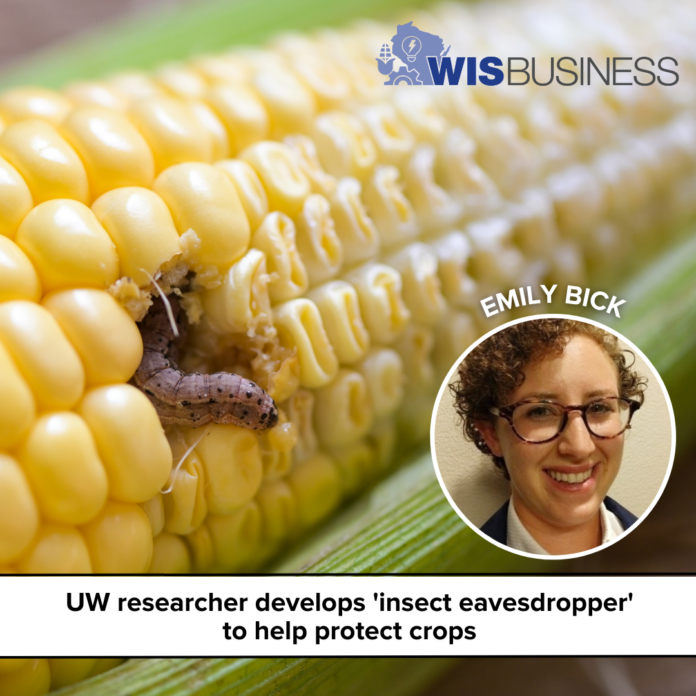A UW-Madison researcher has developed a method for identifying insect infestations in plants, giving farmers a potential new tool for protecting their crops.
The Wisconsin Alumni Research Foundation is touting the invention as a top licensing prospect in the food and agriculture sector.
Assistant Prof. Emily Bick has created a machine-learning algorithm that uses audio signals from microphones to find infestations — including bugs that bore into the plant’s structure, which are difficult to identify without destroying the crops. She is a specialist in precision pest ecology for field and forage crops in the university’s Department Entomology.
“This is the first time a clip-on contact microphone or a stick-on contact microphone has been used to record insect feeding sounds,” Bick said in remarks provided by WARF. “But the key piece for this invention is not just how do we put the parts together, but how do we interpret those sounds that we’re picking up on.”
She says current methods for finding insects in crops requires an “extreme amount” of time and labor, compounding the economic impact of these pests. Plus, farmers typically have to rely on historical weather and climate data in making decisions about addressing pests, which can be unreliable for predicting activity in a given year.
As an alternative to chopping into plants to find pests by hand, Bick developed what she calls the “insect eavesdropper,” which uses inexpensive technology to record insect feeding sounds. By tracking vibrations in the plant rather than sound waves in the air, it can distinguish between that chewing sound and natural noises from precipitation and other weather.
“From those sounds, we can pre-process it and train machine-learning algorithms not just to detect presence and absence, but also to differentiate these species,” she said. “So someone like me can actually put all these pieces together, and take all of these parts which were not designed to study insects in agriculture, and put them together in a way that’s really useful.”
The research team continues to work on how to determine the density or number of insects within the plant, which Bick says will help farmers and ag consultants decide when and how to respond to an infestation.
“Better data means better decisions, hopefully means less pesticides sprayed,” she said.
See more on Bick’s work: https://www.bicklab.com/
–By Alex Moe






